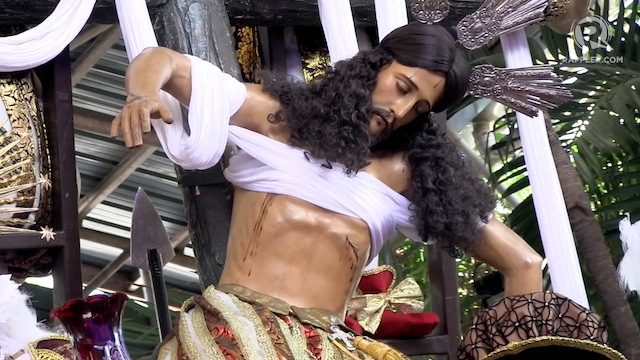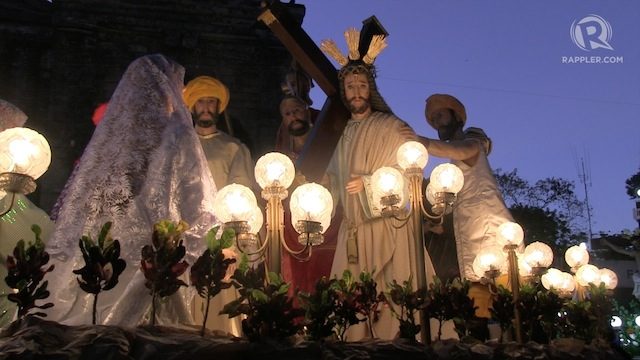Editor’s Note: This piece was originally published in April 2015. Rappler is updating and republishing this to mark Holy Week 2018.
BULACAN, Philippines – Baliuag is not just a town; it is a brand. It is a bus company, a tasty chicken dish, and swardspeak for madness in the vernacular.
It is also a place where Lent is more festive than Advent.
“Here in Baliuag, Holy Week is more fun than Christmas,” Baliuag native Allan Tengco says. “Families flock home during this time of the year, when reunions abound.”
Tengco is a known businessman in Baliuag – the owner of the bus company bearing the name of his hometown. But every year, Tengco devotes his time to prepare for the reason why Baliuag has more festive Lenten seasons than Christmas – the procession of grand carriages with life-sized images of Christ. (IN PHOTOS: The grand carrozas of Baliuag, Bulacan)

Lenten opulence
For 2015, Tengco says, there are a total of 112 carriages, all bearing the image and likeness not just of Christ, but also of the entire cast of characters in the Son of God’s life, suffering, and death. It is a long-running tradition, dating back to Hispanic colonization hundreds of years ago.
In order to participate in the annual Lenten opulence, families and groups apply for accreditation from the Baliuag Monsignor, who, along with a committee Tengco is part of, will screen each proposed carriage theme to avoid duplication.
The gilded carrozas (carriages) of Baliuag are in stark contrast to the more somber Maleldo pilgrimage in the neighboring province of Pampanga, where devotees flagellate themselves into a bloody pulp and endure the agony of giant nails driven into their palms.
In Baliuag, floats carry images of Mary, the Mother of God, clad in silken robes and adorned with sparkling costume jewelry. From the embroidery in Mary’s frocks to the blood oozing from Christ’s punctured flesh, the attention to detail is impeccable, made more pronounced by the larger-than-life images.
“Our guidelines for the statues: not shorter than 5 feet, not taller than 7 feet,” Tengco says.

Hyperbolic spectacle, religious oxymoron
The image of Christ as the definitive icon of suffering and redemption from sin has lodged itself into the collective consciousness of man, spanning across centuries of civilizations, conquests, and colonizations. In his book Christ to Coke: How Image Becomes Icon, art historian Martin Kemp depicts Christ – and Mary, to an extent – as examples of a widespread phenomenon where objects become a “point of intersection of the timeless with time.”
And what true power this phenomenon has on Baliuag, where the practice of building opulent carrozas allows its Catholic faithful to revere the icon representing man’s absolution and the enduring mystery of faith. At the same time, however, the faithful has the liberty to mold and clothe their God to their liking – a practice vilified by other Christian denominations and other religions as bordering on pagan idolatry. But to those who, for years on end, build their carrozas with the labor of love, the practice fulfils the promise of an annual family reunion and celebrates the grandeur of worship.
The many likenesses of Christ range from baleful to anguished, and Mary, from woeful to regal, but they’re all set atop the grandest of stages, turning Lent into a hyperbolic spectacle, a religious oxymoron.
In Catholic practice, Lent is a season of self-imposed material famine – from fasting to deprivation of indulgences to disconnecting from worldly entertainment – for a period of spiritual nourishment. But in Baliuag, where the icons of selfless suffering ride carrozas gilded in brass and gold and are illuminated by lights powered by portable generators, pomp and pageantry are the marks of spiritual plenty. – Rappler.com
Experience the highly spiritual culture of the Philippines in Bulacan. Enjoy special deals when you book your accommodation using our coupons.
How does this make you feel?
